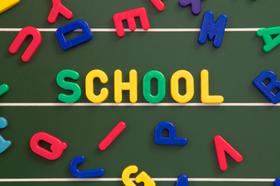Top Rankings
Waverly Community Schools School District ranks among the top 20% of public school district in Michigan for:
Category
Attribute
Graduation Rate
Highest graduation rate (Top 20%)
Diversity
Most diverse schools (Top 1%)
Community Size
Largest student body (number of students) (Top 1%)
Student Attention
Lowest student:teacher ratio (Top 1%)
For the 2025 school year, there are 6 public schools serving 2,695 students in Waverly Community Schools School District. This district's average testing ranking is 3/10, which is in the bottom 50% of public schools in Michigan.
Public Schools in Waverly Community Schools School District have an average math proficiency score of 16% (versus the Michigan public school average of 35%), and reading proficiency score of 32% (versus the 46% statewide average).
Minority enrollment is 70% of the student body (majority Black), which is more than the Michigan public school average of 37% (majority Black).
Overview
This School District
This State (MI)
# Schools
6 Schools
3,509 Schools
# Students
2,695 Students
1,376,331 Students
# Teachers
190 Teachers
82,379 Teachers
Student : Teacher Ratio
14:1
14:1
Student By Grade
District Rank
Waverly Community Schools School District, which is ranked within the bottom 50% of all 846 school districts in Michigan (based off of combined math and reading proficiency testing data) for the 2022-2023 school year.
The school district's graduation rate of 89% has decreased from 92% over five school years.
Overall District Rank
#640 out of 862 school districts
(Bottom 50%)
(Bottom 50%)
Math Test Scores (% Proficient)
16%
35%
Reading/Language Arts Test Scores (% Proficient)
32%
45%
Science Test Scores (% Proficient)
25%
38%
Graduation Rate
89%
81%
Students by Ethnicity:
Diversity Score
0.75
0.56
% American Indian
1%
1%
% Asian
4%
4%
% Hispanic
20%
9%
% Black
34%
18%
% White
30%
63%
% Hawaiian
n/a
n/a
% Two or more races
11%
5%
All Ethnic Groups
District Revenue and Spending
The revenue/student of $17,554 in this school district is less than the state median of $18,510. The school district revenue/student has grown by 5% over four school years.
The school district's spending/student of $14,154 is less than the state median of $17,693. The school district spending/student has grown by 5% over four school years.
Total Revenue
$47 MM
$25,476 MM
Spending
$38 MM
$24,351 MM
Revenue / Student
$17,554
$18,510
Spending / Student
$14,154
$17,693
Best Waverly Community Schools School District Public Schools (2025)
School
(Math and Reading Proficiency)
(Math and Reading Proficiency)
Location
Grades
Students
Rank: #11.
Elmwood Elementary School
(Math: 30-34% | Reading: 35-39%)
Rank:
Rank:
5/
Bottom 50%10
1533 Elmwood Rd
Lansing, MI 48917
(517) 321-3383
Lansing, MI 48917
(517) 321-3383
Grades: 1-4
| 348 students
Rank: #22.
Waverly Senior High School
(Math: 14% | Reading: 39%)
Rank:
Rank:
3/
Bottom 50%10
160 Snow Rd
Lansing, MI 48917
(517) 323-3831
Lansing, MI 48917
(517) 323-3831
Grades: 9-12
| 968 students
Rank: #33.
Waverly Middle School
(Math: 15% | Reading: 32%)
Rank:
Rank:
3/
Bottom 50%10
620 Snow Rd
Lansing, MI 48917
(517) 321-7240
Lansing, MI 48917
(517) 321-7240
Grades: 6-8
| 424 students
Rank: #44.
Winans Elementary School
(Math: 15-19% | Reading: 20-24%)
Rank:
Rank:
2/
Bottom 50%10
5401 W Michigan Ave
Lansing, MI 48917
(517) 321-2371
Lansing, MI 48917
(517) 321-2371
Grades: 1-4
| 379 students
Rank: #55.
East Intermediate School
(Math: 11% | Reading: 30%)
Rank:
Rank:
2/
Bottom 50%10
3131 W Michigan Ave
Lansing, MI 48917
(517) 484-8830
Lansing, MI 48917
(517) 484-8830
Grades: 5-6
| 404 students
Rank: n/an/a
4344 W Michigan Ave
Lansing, MI 48917
(517) 323-3777
Lansing, MI 48917
(517) 323-3777
Grades: PK-K
| 172 students
Frequently Asked Questions
How many schools belong to Waverly Community Schools School District?
Waverly Community Schools School District manages 6 public schools serving 2,695 students.
What is the rank of Waverly Community Schools School District?
Waverly Community Schools School District is ranked #643 out of 846 school districts in Michigan (bottom 50%) based off of combined math and reading proficiency testing data for the 2022-2023 school year. This district ranks in the top 20% of Michigan school districts for: Highest graduation rate (Top 20%), Most diverse schools (Top 1%), Largest student body (number of students) (Top 1%) and Lowest student:teacher ratio (Top 1%)
What is the racial composition of students in Waverly Community Schools School District?
34% of Waverly Community Schools School District students are Black, 30% of students are White, 20% of students are Hispanic, 11% of students are Two or more races, 4% of students are Asian, and 1% of students are American Indian.
What is the student/teacher ratio of Waverly Community Schools School District?
Waverly Community Schools School District has a student/teacher ratio of 14:1, which is lower than the Michigan state average of 17:1.
What is Waverly Community Schools School District's spending/student ratio?
The school district's spending/student of $14,154 is less than the state median of $17,693. The school district spending/student has grown by 5% over four school years.
Recent Articles

The 15 Biggest Failures of the American Public Education System
The world is in a constant state of change and those who fail to adjust fall behind. Unfortunately, the American public education system has not kept up with the times and is currently facing a number of serious problems. Keep reading to learn about the biggest failures affecting the modern U.S. public education system as well as some of the trends that could spark change.

Florida Governor Calls for More Funding for State鈥檚 Public School System
Florida Governor Rick Scott has introduced a state budget for next year that pumps one billion more dollars into the public school system. We鈥檒l look at his reasons for the increase and the responses to the proposal.

Can Your Child鈥檚 School Meet the National Standards?
The article discusses the challenges public schools face in meeting national educational standards. It examines current performance trends, identifies key issues affecting student achievement, and explores potential solutions for improving academic outcomes across U.S. public schools.




